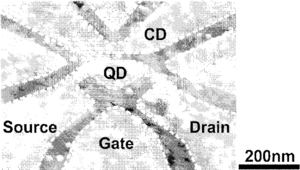CeNS Colloquium
Place: Kleiner Physik-Hörsaal, Geschwister-Scholl-Platz
Date: 20.01.12, Time: 14:00 h
Carbon-based artificial atoms and molecules

Prof. Christoph Stampfer
Physikzentrum der RWTH Aachen
The recent experimental discovery of graphene, filling the gap between quasi one-dimensional (1D) nanotubes and 3D graphite makes truly 2D carbon-based solid state systems accessible. Both graphene and carbon nanotubes consist of a hexagonal carbon lattice and exhibit unique electronic properties making these materials promising candidates for future high mobility nanoelectronics, molecular devices and solid-state quantum systems. In particular, the weak hyperfine interaction and the potentially weak spin-orbit coupling make these carbon material systems promising for spin-based applications. Along this line quantum dots made from graphene and carbon nanotubes have been proposed to be interesting systems for implementing spin-based quantum bits, novel quantum electromechanical systems and new device concepts in general.
We present tunneling spectroscopy based transport measurements of spin states in graphene and nanotube quantum dots. In particular we discuss the fabrication and characterization of graphene quantum dot devices, double quantum dots and very recent graphene-carbon nanotube hybrid quantum devices, including ultra-clean carbon nanotube quantum dots. The fabrication is based on mechanical exfoliation of graphene followed by electron beam lithography and dry etching techniques. The single-Iayer quality of graphene is confirmed by Raman spectroscopy and low-noise transport measurements are performed at cryogenic temperatures. An example of a graphene nanostructure consisting of a quantum dot (QD), i.e. an artificial atom and a charge detector (CD) is shown below.

